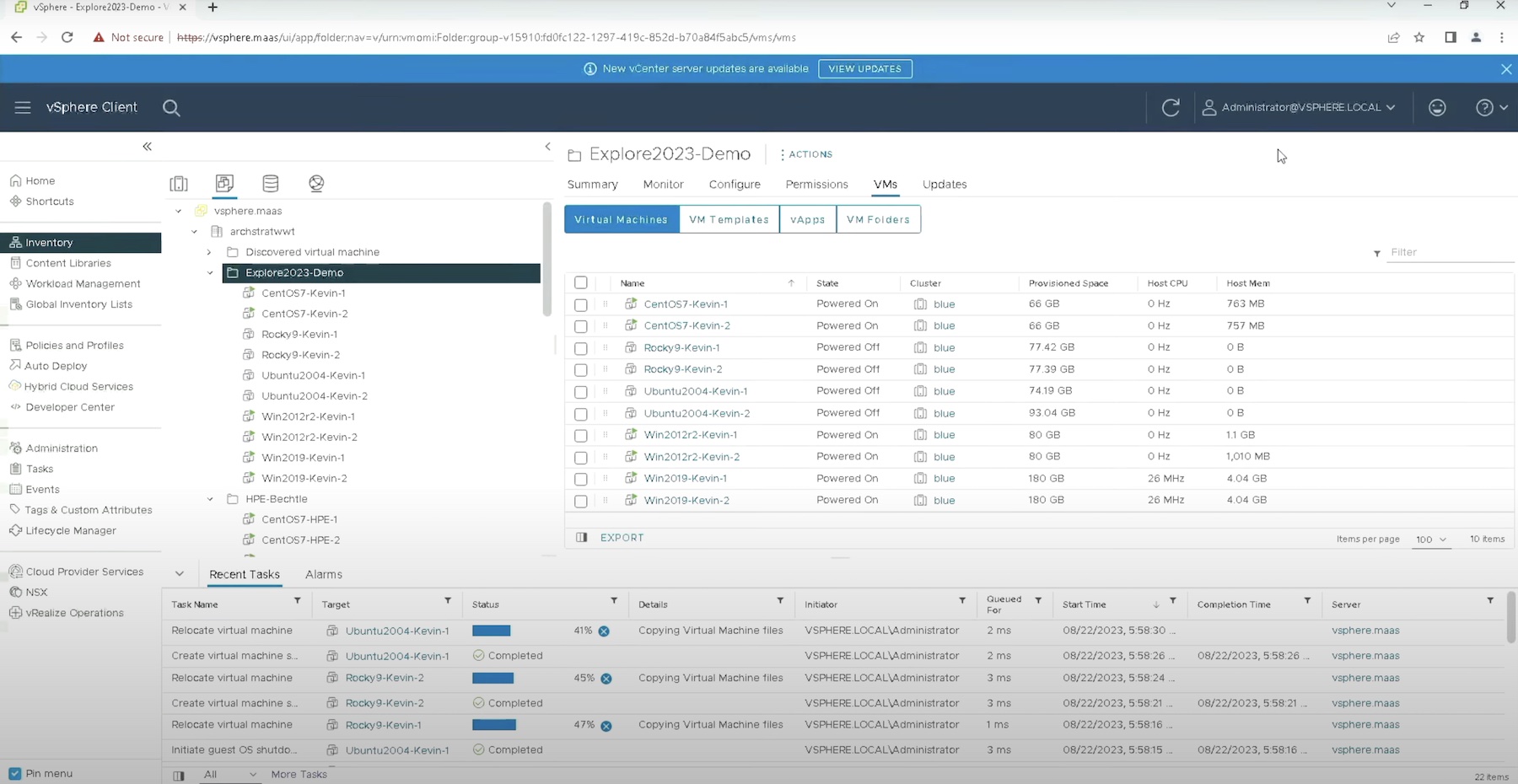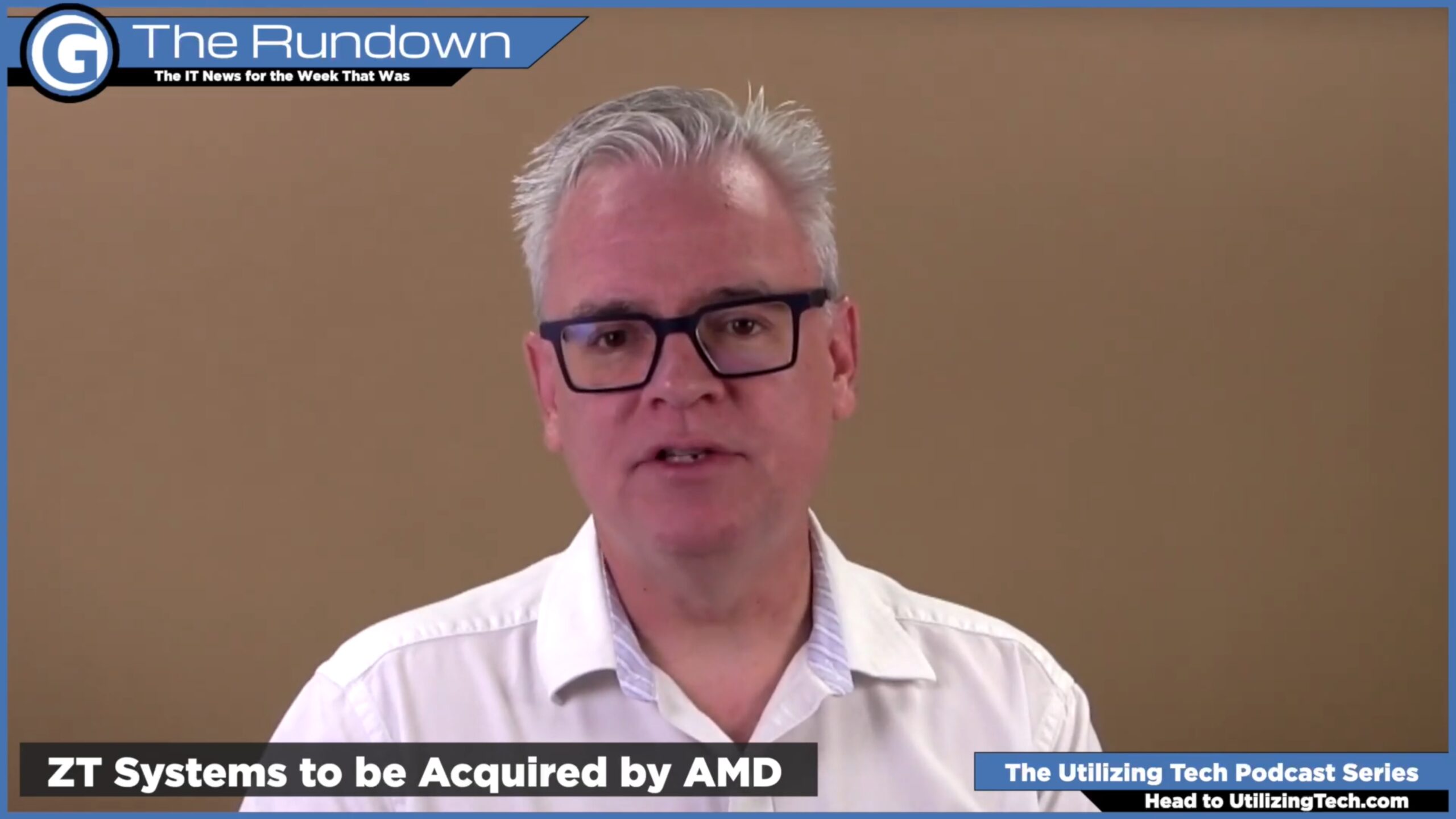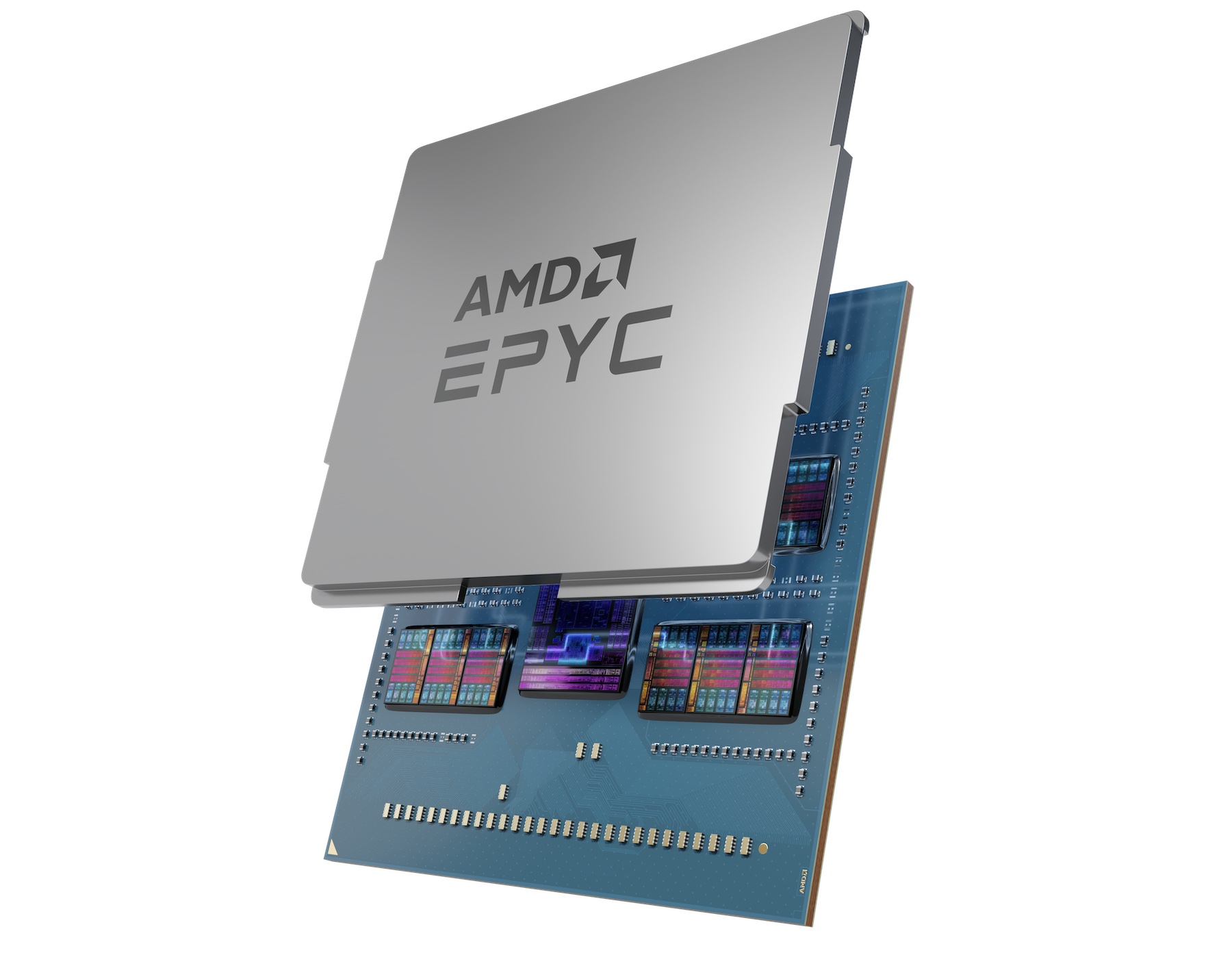Running IT on legacy infrastructure is a seemingly risk-averse choice, one that maintains the status quo and achieves better cost balance. But a little yield-curve analysis shows the costly tradeoffs of doing so.
Aging infrastructures cast a long shadow of technical debt on organizations. It involves high risks and yields disappointing returns. So what’s stopping companies from doing full-scale system overhauls? A cold migration process that involves prolonged and costly downtimes.
At the recent Tech Field Day Extra at VMware Explore US 2023, AMD presented the VMware Architecture Migration Tool (VAMT), a solution AMD and VMware jointly designed to provide a quick, painless and automated way to cold migrate machines between different architecture types in the same vCenter.
Need for Upgrade
From shooting upfront costs, to migration headaches, there are many deterrents to hardware upgrades. Ripping and replacing aging systems typically come with a hefty price tag, and considering that certain legacy systems may still be in use, it often feels like throwing away money. So, companies wind up working around the glitches and quirks of a dying system until it bites the dust one day.
But doing this has its costs too, and often one that is far greater than the alternative. An aging setup is, first and foremost, inimical to security as it opens up the organization to possibilities of infiltration. The overall cost of ownership of running a legacy infrastructure is many times higher than that of a modern, updated infrastructure. But more and most, a dated infrastructure is a laggard on all of IT, that is far worse than the momentary cost shock of upgrading.
Let’s look at the arithmetic. The payoffs of moving from legacy architecture to the new, high-power AMD EPYC processor are astonishing. For starters, AMD EPYC processors promise mind-blowing performance, a must-have for modern, high-performance workloads. This alone translates to elevated user experience and better value for business bottom line.
Secondly, EPYC’s energy efficiency numbers are outstanding. Benchmarks show that EPYC-powdered x86 systems have half the total cost of ownership (TCO) as Xeon-powered ones. The processor’s reduced energy footprint means users can run more workloads on fewer servers. From the beginning, this can reduce energy bills to up to 52%, providing huge cost cuts within the first three years, also reflected in the overall operating expense from rack footprint consolidation.
Going through the Motions
Typically, companies that understand the benefits of architecture migration set funds aside for regular system upgrades. But pulling the plug on old systems is not a breeze either. Complete replacements are a major business disruptor. Migrating virtual machines (VMs) across different hardware architectures follows a complex path that requires powering down systems for hours leading to long and expensive downtimes. It is neither simple nor cheap.
AMD and VMware are set to change that with VAMT. VMware Architecture Migration Tool is a solution that automates the process of going from baseline to a target architecture end to end, making it frictionless, and non-disruptive.
VMware already has tools like EVC that helps ease the live migration process, but it has a major shortcoming. It locks down performance and capabilities to the lowest common denominator. “If you have a three generational family VMware cluster of CPU feature suites, different ISA instructions that are being put across the board, memory fixes, security flaws and fixes that are happening in the hardware itself, rather than taking advantage of those by upgrading the entire way through the stack for the latest and greatest hardware, you’re being locked to the low hanging fruit – the older generation of CPU – just to maintain that live migration capability,” explains Chuck Gilbert, Technical Director of Solutions Architecture, AMD.

VMware Architecture Migration Tool
With VAMT, there is a way around. “This tool is all about making it easy to perform the cold migration, and the steps that are required to take your virtual machine through the life cycle of going from one x86 architecture to another X86 architecture,” he says.
The solution was there with VMware all along. “The way to solve all of these challenges has always existed in the entire VMware stack inside of operators’ datacenters.” All these steps are packed into VAMT, and rolled in with some extra capabilities. The result is a tool that makes migration quick and easy with automation.
Typically, the migration lifecycle involves three steps- planning where information about target VMs is gathered and a course of implementation and other change activities are charted. Users are notified about upcoming changes and potential application outages. The next step is migration. In this step, the concerned virtual machines are suspended or powered down and migrated between hosts. This can take anywhere between a couple hours to several hours depending on the number of VMs and the type of migration. Once migration is done, the VMs are powered up and brought back online. The final step is to validate, making sure that the applications are running as they should post-migration.
But validating application performance is too specific to be done in a sweep like an upgrade. It has certain nuances. “I’ve never met three different companies in the room that are running the exact pair of same applications, and test and validate them in the same exact way. This means that the customer has the best knowledge of how to go through and validate the application stack,” says Gilbert.
VAMT automates this lifecycle from the first to the final step. “If a virtual machine has done a cold migration, and you’ve powered it up, the first thing that is going to happen is the operating system is going to boot and VMware Tools is going to report that it is alive.”
Passing this threshold indicates that the migration process is 80% through. “You haven’t gone through kernel panic, or run into some type of issue in the actual migration. The operating systems is responding, and the application stack can fire up on top of that,” he says.
In case of a failure of execution, VAMT provides snapshots of the VMs to quickly allow administrators to roll back to the previous state. Once migration is complete, VAMT stands by for all VMware Tools to load successfully indicating that the migration has been completed.
VAMT also gives users the ability to control parallel migration tasks and customize pre-migration and post-migration functions. Users can schedule migrations at a time best suited, and stop the process if it exceeds the estimated time frame.
A report is generated at the end of the process containing the migration status of every VM. This can be sent to an email address for post-migration analysis, or to incident management services to actuate troubleshooting.
To ensure that VAMT serves most use cases, the tool has broad built-in integrations. “If you have some type of CI/CD process that you’re following for standard application upgrades and lifecycles, we’ve built a way to be able to integrate this into those applications, processes and workflows,” Gilbert said.
It finishes up by clearing up the snapshot cache after every successful migration, ensuring that backup systems are not overloaded.
As a migration tool, VAMT works for both Intel and AMD hardware migration, between and within the vendors. It is free to use for all on GitHub.
Wrapping Up
There is more than enough reason for enterprises to modernize legacy infrastructures. With VAMT, now there is a way to tap into the perks of a modern setup without making it the operators’ full-time job, or counting losses in downtime.
For more information, check out AMD’s presentations from the latest Tech Field Day Extra at VMware Explore 2023 at Techfieldday.com.




